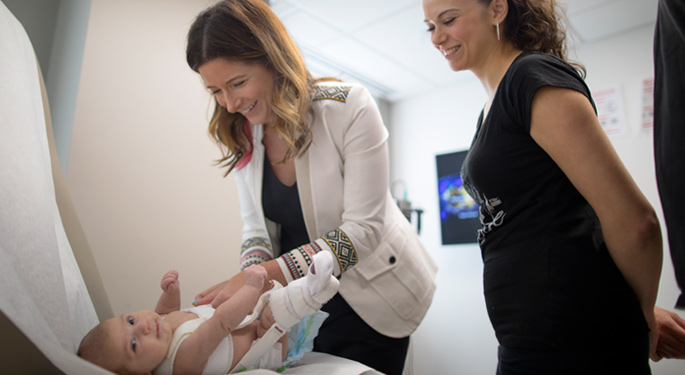Pediatric Orthopedics and Scoliosis

Meeting the orthopedic needs of children is our specialty. We speak with our young patients of all ages and their families in a child-friendly setting. Using the most effective treatment for your child—surgical or not—we treat conditions ranging from a simple bone fracture to severe scoliosis of the spine.
Recognizing the individual needs of children with orthopedic conditions, Mount Sinai has built a team of pediatric orthopedic specialists to provide advanced care for a range of conditions.
Our Team Approach to Treating Children
Because caring for a young, growing patient requires specialized treatment, Mount Sinai’s pediatric orthopedic practice is home to not only pediatric orthopedists, but also pediatric radiologists, pediatric physical therapists, and pediatric surgeons and anesthesiologists. Our team of highly skilled doctors has a record of positive outcomes, using a range of advanced, complex surgeries as well as therapies such as bracing, casting, and injections.
Mount Sinai Health System has a diverse and experienced staff including clinical researchers, allowing us to provide direct access to the specialties your child may need.
Compassionate, Family-Centered Care
We offer the groundbreaking expertise of a large academic medical institution as well as a comfortable, friendly environment. If your child needs long-term care, our team provides continuous oversight to ensure personal and consistent treatment for as long as necessary. We offer support services for children and families of children to make you all feel as comfortable as possible whenever you visit your Mount Sinai Health System doctors.